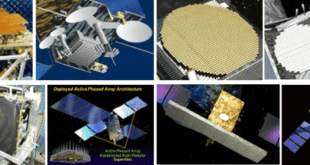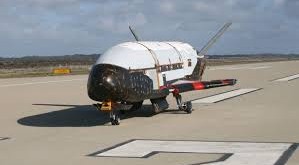Introduction:
The realm of space exploration and satellite technology has witnessed a remarkable revolution with the advent of Very Low Earth Orbit (VLEO) satellites. These innovative satellites, positioned at a close proximity to Earth, have unlocked a world of possibilities and are reshaping the landscape of space missions. In this blog article, we will explore the transformative potential of VLEO satellites, highlighting their advantages, applications, and the profound impact they have on various industries and scientific endeavors.
Unveiling the Benefits of VLEO Satellites:
VLEO is the region between 100-500 kilometres in altitude. Operating within this region confers a number of benefits to both private and public sector satellite operations, including drastically reduced payload power draw and improved signal-to-noise ratios for synthetic aperture radar, enhanced resolution for optical imaging, and lower latency for satellite communications.
VLEO satellites offer a host of benefits that make them a compelling choice for space missions. One significant advantage is their enhanced Earth observation and remote sensing capabilities. By operating in VLEO, these satellites can capture high-resolution images and data, revolutionizing environmental monitoring, disaster management, and urban planning. The detailed information they provide enables more effective decision-making and response strategies.
Furthermore, VLEO satellites are instrumental in expanding global connectivity and broadband services. By bridging the digital divide, these satellites bring internet access to underserved regions, empowering communities and fostering socio-economic growth. The ability to provide reliable and fast communication services to remote areas is a game-changer in today’s interconnected world.
In addition, VLEO satellites enable space-based services that were previously unattainable. Satellite servicing, for instance, allows for on-orbit maintenance and repairs, prolonging the lifespan of satellites and reducing the need for costly replacements. VLEO satellites also play a crucial role in debris tracking and removal, ensuring a sustainable space environment. Moreover, their proximity to Earth facilitates in-orbit assembly and deployment of larger structures, opening up new possibilities for space exploration and resource utilization.
Empowering Scientific Exploration: VLEO satellites have revolutionized scientific exploration across various disciplines. In astronomy and astrophysics, they enable unprecedented observations of celestial objects, unraveling the mysteries of the universe. VLEO satellites equipped with advanced sensors and instruments capture valuable data, contributing to our understanding of cosmic phenomena and enabling breakthrough discoveries.
Furthermore, VLEO satellites are instrumental in space weather monitoring, studying solar activity and its impact on Earth’s environment. By providing real-time data on solar flares, geomagnetic storms, and radiation levels, these satellites aid in predicting and mitigating potential disruptions to communication systems, power grids, and satellite operations.
Moreover, VLEO satellites have revolutionized planetary science by enabling detailed exploration of other celestial bodies. Their close proximity to Earth allows for high-resolution imaging and data collection, facilitating the study of planets, moons, and asteroids. These missions provide invaluable insights into the composition, geology, and potential habitability of other worlds, laying the foundation for future space exploration endeavors.
Here are some of the potential benefits of VLEO satellites:
- Low latency: VLEO satellites have much lower latency than traditional satellites, which means that data can be transmitted more quickly. This is essential for applications such as real-time video streaming and remote surgery.
- High bandwidth: VLEO satellites can provide much higher bandwidth than traditional satellites, which means that they can support more data-intensive applications. This makes them ideal for applications such as cloud computing and online gaming.
- Global coverage: VLEO satellites can provide global coverage, which means that they can be used to connect people and devices all over the world. This is essential for applications such as disaster relief and environmental monitoring.
- Reduced cost: VLEO satellites are expected to be much cheaper to operate than traditional satellites, which could make them more accessible to a wider range of users.
Decreasing a satellite’s altitude from 650 kilometers to 160 kilometers leads “to a 64x reduction in radar RF power, 16x reduction in communications RF power and 4x reduction in optical aperture diameter to achieve the same performance,” Thales Alenia Space explained in a 2016 paper on Skimsats, the small satellites the French-Italian company designed for VLEO.
Satellite constellation operators are well aware of the benefits of VLEO.
Planet lowered the altitude of Earth-observation SkySats from 500 kilometers to 450 kilometers in 2019 to improve the resolution of SkySat imagery.
SpaceX revealed plans to send some 7,500 Starlink satellites to altitudes between 335 and 346 kilometers under a plan approved in 2018 by the Federal Communications Commission.
China’s state-owned defense contractor, the China Aerospace Science and Industry Corporation (CASIC), is set to launch its first satellite for a very low Earth orbit (VLEO) constellation in September. CASIC’s VLEO satellite aims to demonstrate ultra-low orbit flight technology, high-resolution ground imaging, and onboard data processing. While specific details such as the constellation’s size and launch schedule remain undisclosed, this move reflects China’s expanding presence in space endeavors beyond its main space contractor, CASC.
VLEO is also, in effect, a ‘self-cleaning’ region of space, owing to the high amount of atmospheric drag which is capable of naturally deorbiting most space objects within weeks. It is also significantly easier, and hence cheaper, to insert payloads into VLEO instead of higher, more conventional orbits. Therefore, operating in VLEO represents a business-positive means for satellite operators to strengthen their value propositions through reduced operational costs and improved payload function, while at the same time mitigating the impact of increased satellite activity on the orbital environment.
Challenges in VLEO Satellite Missions:
While VLEO satellites offer numerous advantages, they also come with their share of challenges. One major challenge is the increased atmospheric drag experienced in VLEO. The denser atmosphere at lower altitudes creates drag forces that can lead to a gradual decay in the satellite’s altitude over time. Mitigating this drag requires advanced propulsion systems and precise orbit control techniques.
Additionally, the harsh radiation environment in VLEO can pose challenges to satellite electronics and components. Radiation-hardened materials and shielding are essential to ensure the longevity and reliability of VLEO satellites.
For in-depth understanding on VLEO Satellites technology and applications please visit: VLEO Satellites: Unlocking the Potential of Very Low Earth Orbit
Enabling Technologies for VLEO Satellites:
To overcome the challenges associated with VLEO missions, several enabling technologies have emerged. Electric propulsion systems provide efficient and precise thrust, allowing satellites to counteract atmospheric drag and maintain their desired orbits. These systems utilize ion or plasma thrusters that generate thrust by accelerating charged particles.
Moreover, advancements in materials science have played a crucial role in reducing atmospheric drag and increasing satellite efficiency. Lightweight and durable materials, specifically designed to withstand the harsh conditions of VLEO, help minimize drag and improve overall satellite performance.
Furthermore, energy harvesting technologies such as solar panels and advanced energy storage systems are critical for powering VLEO satellites. These technologies allow satellites to harness solar energy and store it for use during eclipses or when the satellite is in Earth’s shadow.
VLEO satellites have been flown before. The European Space Agency’s Gravity field and steady-state Ocean Circulation Explorer spacecraft, called GOCE, remained at altitudes of 240-280 kilometers from 2009 to 2013 with the help of xenon-fueled electric thrusters.
Xenon also powered the electric thrusters that kept the Japan Aerospace Exploration Agency’s Super Low Altitude Test Satellite (SLATS) at an altitude of about 200 kilometers from 2017 to 2019.
Conclusion:
VLEO satellites hold tremendous potential for revolutionizing space missions and scientific exploration. Their close proximity to Earth enables advanced Earth observation, global connectivity, and space-based services that have far-reaching benefits. While challenges exist, enabling technologies such as electric propulsion, radiation-hardened materials, and energy harvesting systems are paving the way for the successful deployment and operation of VLEO satellites.
As we continue to push the boundaries of space exploration, VLEO satellites offer limitless possibilities for unlocking new discoveries, advancing scientific knowledge, and transforming various industries. The transformative potential of VLEO satellites is undeniable, and their impact on the future of space missions is set to be profound. With ongoing advancements and innovations, we are poised to witness a new era of space exploration powered by VLEO satellites.
References and Resources also include:
https://spacenews.com/how-low-can-satellites-go-vleo-entrepreneurs-plan-to-find-out/
 International Defense Security & Technology Your trusted Source for News, Research and Analysis
International Defense Security & Technology Your trusted Source for News, Research and Analysis

